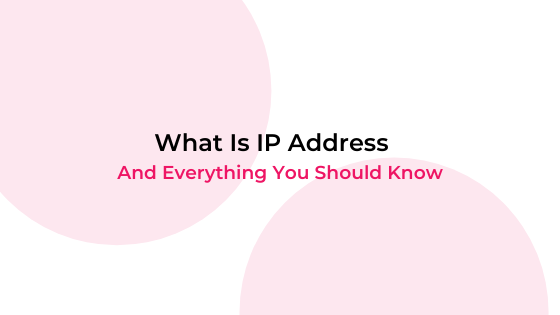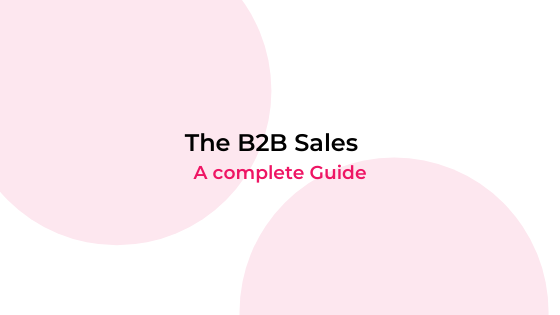You should certainly already know the concept of Customer Success (CS): helping your customer to generate maximum value with your product.
That’s because the goal of every business is to make the customer achieve success.
And that may require using a series of actions and strategies to help customers use your product to solve their problems.
However, the interaction with the customer does not stop there, which is why another concept has started to become equally important in the relationship with the customer: Customer Experience (CX).
Some people argue that Customer Success is a part of Customer Experience, while others say the opposite: CX is part of CS.
The thing is that it is important to understand that each of these concepts focuses on a different part of the customer journey.
Check out:
- What does Customer Experience mean?
- Why use Customer Experience strategies?
- How can you measure the Customer Experience?
- How to improve your Customer Experience Strategy?
What does Customer Experience mean?
Customer experience can be defined as the effect of the interaction between a company and its customers during the entire period of their relationship.
It starts with the customer’s first contact with your company, which may be even before he becomes a real customer.
This experience involves 3 fundamental aspects: the customer journey, the points of contact with the brand, and the environments in which the customer interacts with it, which includes virtual environments.
From the point of view of the brand, it is the image that it passes on to customers throughout the interaction process, before, during, and after conversion, be it a purchase or contract.
That’s why positioning in a consultative way can relieve customers’ fear and purchase anxiety and create a long-term and trusting relationship.
Customers who know they can turn to your company to find quality content and honest advice, instead of just a sales pitch.
This will definitely make the customer come back more often.
Therefore, the concept of CX also influences the areas of Marketing and Sales, which help to create points of contact in the customer’s life cycle.
Also read: The B2B Sales Process – How It Works And Why It Is Important For Business Success
A great Customer Experience focuses on:
- B2B and B2C;
- Customer and results;
- Organizational culture;
- Design (creating products that deliver value and help customers achieve the desired results);
- Emotions, feelings, and perceptions;
- More comprehensive strategies;
- People, both employees, and customers;
- Product and value generated;
- Relationship;
- Business results.
When Customer Experience techniques are well used, acquiring customers becomes easier, brand and consumer loyalty is boosted and retention reaches a new level.
However, it is worth remembering that the customer experience must be seen as constant actions to be taken to achieve good results in the long run.
Nothing should be planned with momentary interactions in mind, but lasting relationships that make the brand successful.
Why use Customer Experience strategies?
The point is that, as consumption habits change, the market becomes increasingly competitive.
Therefore, if customers are not satisfied with the product or service, they can simply review the strategy and choose a competitor. Simple like that.
It is essential to understand the needs and context of each person involved in a B2B purchase decision.
Also read: MQL & SQL: How You Can Use It To Improve Your Sales
You should also take advantage of the wealth of data available to know things like what sector the customer works in, their geographic focus, what stage they are on, what are their growth goals for the future, etc.
Without that foundation of understanding, you will not be able to offer a successful customer experience.
This means that B2B companies also need to focus on creating a great experience where customers actually choose to do business with them.
And remember, even if the contract is between two companies, it is people who do the negotiation in the B2B context. In the end, you negotiate and offer experiences to people.
How can you measure the Customer Experience?
If promoting a good Customer Experience is an increasingly important strategy for companies that want to improve and strengthen the relationship with their audience, measuring this experience is essential to improve the product and service and develop the business.
The data that your customer provides throughout the journey is precious and you should use that data to create actions.
Understand this data, not only as a diagnosis of what has already happened, but also as a prediction of the customer’s behavior.
So, you can turn this data into insights to deliver proactive actions to your customer before they come to you.
For that, you need to adopt some practices that help you, not only to compile all the data in one place, but to make the correct analyzes, generate assertive metrics, and trigger actions at the most appropriate moment.
Keep reading: How To Close A Sale With Whoisvisiting Software
Check here some of the main metrics of Customer Experience: Customer Lifetime Value, First Contact Resolution, Average Resolution Time, Employee Net Promoter Score, Customer Effort Score
1. Customer Lifetime Value (CLV)
It indicates a forecast of the net profit that will be obtained during the customer’s relationship with the company.
CLV can be considered both as a business value that customers generate during the entire relationship period with the company and a value related to a certain period (one year, five years or any period that makes sense for the company).
2. First Contact Resolution (FCR)
An index that shows how many customers have their questions answered or their problems solved in the first contact with the company.
It is indicated as a percentage of the total contact requests that a company receives.
This metric indicates whether customers are getting the help they need quickly and whether company employees are able to solve problems on their own.
3. Average Resolution Time (ART)
This metric measures the time it takes to solve a problem, from the moment it is presented by the customer to the point when it is completely resolved.
To find the average, divide the sum of all resolution times by the number of cases resolved in a given period.
As you can imagine, when problems are solved quickly, customers tend to be happier.
4. Employee Net Promoter Score (e-NPS)
One of the ways to generate a good Customer Experience is to keep your employees engaged, happy and satisfied in the work environment.
It is no wonder that employees are often called internal customers.
Therefore, it is important to apply some way of measuring their satisfaction – and, if it is not good, to correct it.
Therefore, in the same way, that NPS is used to measure customer satisfaction, it is possible to use the Employee Net Promoter Score (e-NPS) to measure the satisfaction of a company’s employees.
The NPS and e-NPS are measured in the same way: respondents must rate the company or given situation from 0 to 10.
Employees are also ranked in 3 categories: detractors, neutrals or promoters, according to the notes given.
Also, an important question to remember is that e-NPS must be answered anonymously.
So, don’t be surprised if the grades are low.
After all, it is the time when the employee can say everything he thinks without fear of retaliation.
5. Customer Effort Score (CES)
It is the third most popular Customer Experience metric that involves customer feedback. It is a transactional metric and generally looks at the simplicity of a single solution.
In general, the question asked in a CES assessment is: how easy was it to solve your problem today?
The scale generally used has between 5 and 7 points (Very Difficult to Very Easy; Strongly Disagree to Strongly Agree, for example).
By analyzing the distribution of responses according to the alternatives given, it is possible to identify where the biggest problems of the Customer Experience are.
And from there, you can refine your strategies to reduce churn.
Throughout the Customer Experience with your brand, the more you can measure that experience and interaction, the better.
After all, all the information you get from this relationship is relevant input for you to improve your company’s performance with customers.
How to improve your Customer Experience strategy?
The customer experience is a differentiator for any business that wants to stand out, as customers are increasingly demanding and are not content with just good service.
It is important to keep in mind that any contact between a consumer and a company will generate a reaction, which can be positive or negative.
So, you have already understood how much the customer experience should be taken into account when selling a product or relating to it.
However, you may have doubts about what should be done to make this experience a memorable one.
Thinking about it, we have separated below some fundamental points in which you need to be aware. Check out:
- Know your customers;
- Have a customer-centric view;
- Have a customer journey mapped;
- Listen to what your consumer has to say;
- Invest in training for your salespeople;
- Turn data into actions;
- Offer personalized experiences;
- Explore and use new technologies;
- Support and educate your customer;
- Understand that experience is worth much more than the product;
- And also, invest in your client’s success.
Beyond that, understand that being aware of all the interactions that consumers have with your company is necessary for them to realize how much you care about them and are concerned with solving their doubts and solving their problems.
Regardless of being a face-to-face contact, through social networks, applications, email or phone, always remember to treat him with the importance he deserves.
Afertall, this whole context includes keeping in touch with customers and meeting their constantly changing needs as the company grows and evolves.
Do you want to deliver a better experience for your customer? Book a demo with our experts and see how to improve your customers’ results and experience through proactive data and actions.
It also means providing assistance with problem-solving and continuing education to use the products to their full potential, helping the customer to find and scale their formula for success.
Looking at customer success can ensure a more reliable relationship and prospects for loyalty.
To devise strategies that make sense not only for your business, but for your customers, is to put them in the spotlight, not only to solve the current pain, but to become a consultant to whom the client will turn.
Because they know that the experience will be completely satisfactory.




